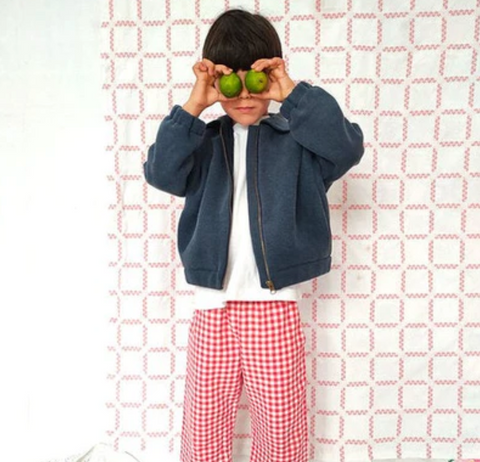When you think of sustainable children's clothing, the first thing that comes to mind is fair fashion, textile seals such as GOTS and OEKO-TEX, and natural materials. When you think of cheap children's clothing, however, you quickly think of second hand.
It is so obvious that the most sustainable children's clothing is the one that is already there. Why secondhand and upcycling is the most sustainable children's clothing and Tildi is the best place to buy it has nine good reasons
1. Fashion factor: Not all parents are interested in eco-friendly children's clothing
Parents often think that eco-friendly children's clothing is ugly and not very modern. If you think of certain eco-friendly children's brands, this may be the case. That's why we have set up a special category at Tildi where stylish and urban children's clothing can be bought second-hand. There you will find current styles that have nothing to do with the eco-friendly image, but are just as good for children and the environment.

2. Cost factor: Not all parents have the money for organic children's clothing
You can often buy organically produced children's clothing for little money, such as Alana from DM. It is even more sustainable and cheaper to buy these second-hand. At Tildi, we pay attention not to brands but to textile seals. We label all items that have such a seal.
3. Convenience factor: Not all parents have time or desire for flea markets
But if you immediately think of flea markets, bazaars and Vinted when you think of sustainable and affordable children's clothing, you're wrong. There's an easier way. Sustainable children's clothing can also be bought second-hand online, like with us. Parents can put products from different retailers in a shopping cart, pay for them and receive them conveniently at home by parcel.
4. Environmental Factor: Eco-friendly children's clothing and its impact on children
The most environmentally friendly children's clothing is that which actively avoids waste and does not use new raw materials from our earth in new products. The focus here is particularly on upcycling children's clothing. This is not only more beautiful than new, but also uses materials in new products that would otherwise end up in the trash. Anyone who buys upcycling fashion for their children is therefore buying the most environmentally friendly clothing currently available on the market.
5. Social factors: No child wants exploitation on his skin
Ethical children's clothing is clothing that does not exploit the people who make it. That is why we at Tildi have excluded certain brands that are considered fast fashion. We do not want children to walk around in clothing that has most likely caused human suffering. We also place great value on fair trade children's clothing such as the Better Cotton Initiative and the Green Button.
6. Natural materials: no child wants to carry a plastic bag
Nobody wants to dress their child in a plastic bag, but that is exactly what polyester clothing is. Children sweat in it and get skin irritations. In addition, every polyester fiber is produced using chemical or industrial processes. That is why we at Tildi attach great importance to only having clothing made from natural materials in our range and specifying the exact material composition. Here you can find our wool/silk category , for example.
7. Brand selection: Parents should quickly find what their children feel comfortable in
Parents can find sustainable children's clothing brands in our range using the filter. If your child particularly likes a brand or it suits them, you can always look for it here first. Our selection of sustainable children's brands is large. These include Alana and Bobo Choses , as well as Disana , Hess Natur and Engel .
8. Children’s clothing without chemicals is almost non-existent
It is said that chemicals are washed out of clothing after about 30 washes. Even when you buy sustainable children's clothing, chemicals are often used to create colors and/or prints. With second-hand clothing and upcycling, the items of clothing have usually been washed many times, meaning there are no chemical residues from production left in the clothing. The best thing is that no seamstress anywhere else in the world has to be exposed to the chemicals.
9. Children's clothing made from recycled materials is not sustainable per se
In general, we sell second-hand clothing made from recycled materials when it makes sense, e.g. rainwear , where plastics have to be used and there is no good alternative. In general, however, we believe that slowing down fashion is important and that recycled materials and their effect on children are still little tested.









